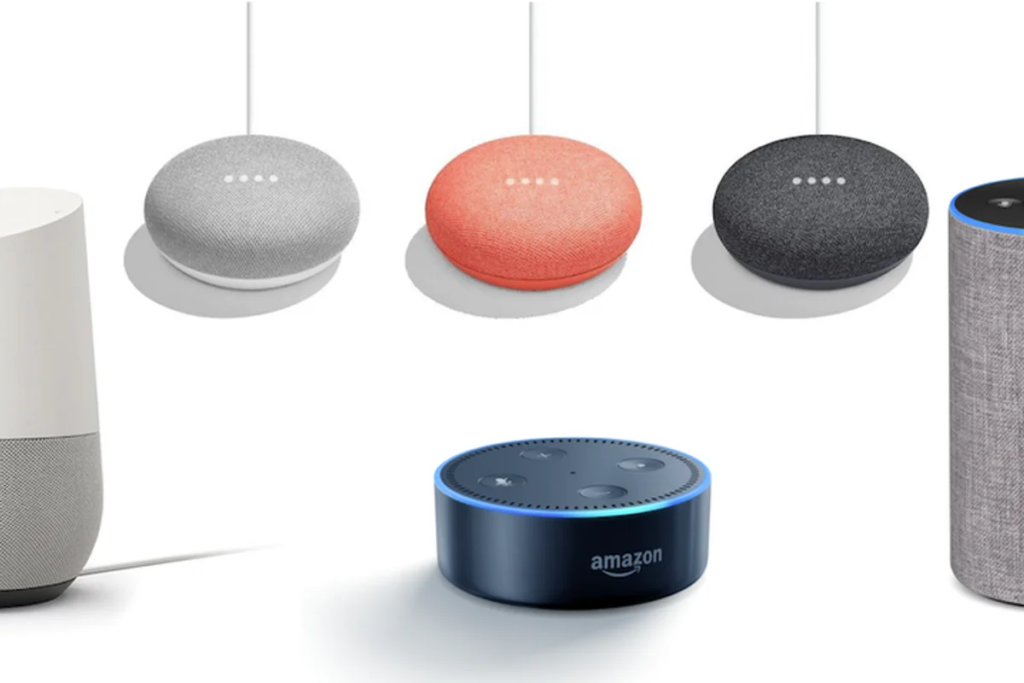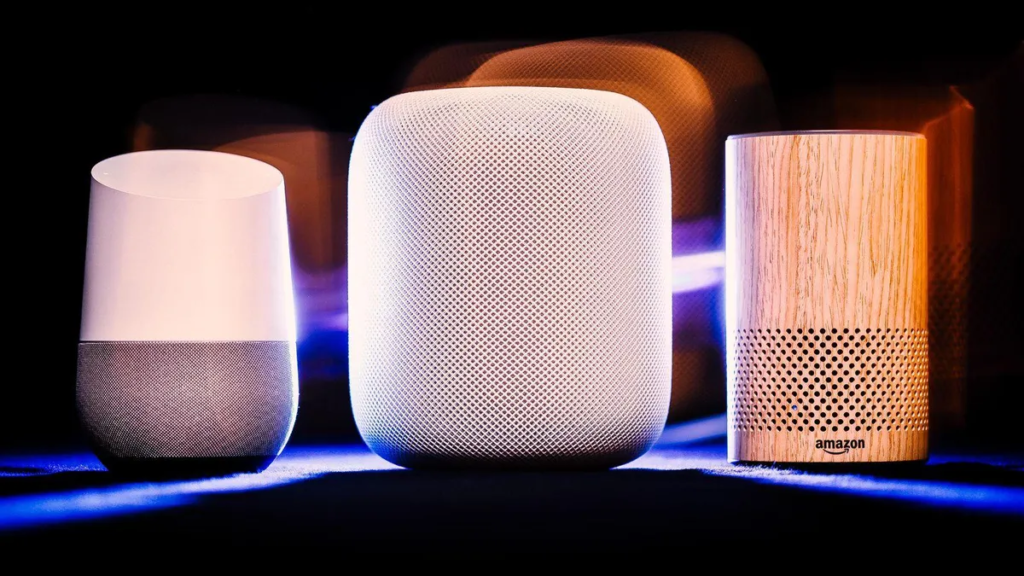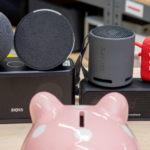Discover 10 hidden gems of Amazon Alexa that can make your life easier in 2025! From voice commands to advanced routines, unlock Alexa’s full potential with these lesser-known features.
Table of Contents


Introduction
If you’re anything like me, you probably use Amazon Alexa for routine tasks like setting timers, checking the weather, or asking it to play your favorite album while you cook. But let me tell you, Alexa has several hidden tricks that most people aren’t aware of!
Did you know that Alexa can whisper to you or track packages with a simple command? I didn’t either—until I discovered some game-changing qualities that made me appreciate Alexa even more. So, whether you’re a casual user or a smart-home enthusiast, here are ten lesser-known Alexa capabilities you should explore in 2025.
10 Lesser-Known Features of Amazon Alexa You Should Know in 2025
Amazon Alexa will be more assertive in 2025, with innovative functions beyond basic voice commands. Did you know Alexa can summarise emails, analyze analyses in real time, and detect strange noises in your home? Alexa is changing how we engage with technology by offering AI-powered health monitoring, offline voice control, and increased smart home automation. Whether you want personalized dates, robust parental controls, or AI-generated bedtime stories, these hidden jewels will elevate your Alexa experience.
1. Whisper Mode
Whisper Mode is one of the best tools I’ve encountered. If you’ve ever talked to Alexa late at night and accidentally woke someone up, this is for you. Picture this: It’s 11 p.m., the baby is finally asleep, and you ask Alexa for the weather. She makes it sound like you’re at a stadium, which sounds terrible.
Whisper Mode solves that problem. To turn it on, say, “Alexa, turn on Whisper Mode,” or go to the Alexa app and find it under “Settings > Voice Responses.” After that, you can whisper to Alexa, and she’ll whisper back. It’s strange but wonderful. I use it to quickly check if my package arrived without bothering anyone.
Here’s a helpful tip: Whisper Mode works great with routines. For example, I set up a “Night Mode” process that lowers my lights and makes Alexa speak quietly. It’s like having your night helper.
2. Multi-Room Music
Have you ever had a cleaning mix that didn’t work because the music didn’t match the vibe in each room? That was me until I discovered Alexa’s Multi-Room Music feature. It’s like having a show in your whole house!
It’s surprisingly simple to set up. Open the Alexa app, go to “Devices,” create a new speaker group (I called mine “Everywhere”), and select the Echo devices you want to add. I can simultaneously play music in my living room, kitchen, and bedroom.
It stands out at parties. I once held a game night with chill, lo-fi beats playing everywhere. Guests enjoyed it, and I didn’t have to struggle with Bluetooth speakers. Remember, good Wi-Fi is essential. If your connection is weak, the music may stop. Pro tip: Use this feature during family movie nights to sync sound across various rooms if someone’s in the kitchen grabbing snacks.
3. Alexa Guard for Home Security
Alexa Guard functions similarly to a free tiny home security system. After setting it up one weekend before I left town, I can’t imagine living without it. When Alexa is turned on, it listens for noises like glass shattering or smoke alarms and notifies your phone.
To activate it, say, “Alexa, I’m leaving,” or turn it on in the Alexa app. I even forgot to turn it off once, and when Alexa alerted me to a loud noise, it was my cat knocking over a vase.
I connected Alexa Guard to my bright lights and Ring doorbell for extra security. The lights sporadically switch on and off to give the impression that it is someone’s house while I’m away. It’s a lifesaver for mental tranquillity. When you get back, remember to say, “Alexa, I’m home,” or otherwise, she’ll continue to listen for trouble.
4. Routines That Simplify Your Day
Honestly, I didn’t get the hype surrounding Alexa Routines. Although the concept sounded cool, it appeared complex. I must admit that I was utterly mistaken. Routines were my favorite Alexa feature after I worked it out; I honestly don’t know how I survived without them.
Here is a sample of my morning ritual: Alexa tells me the daily weather and news headlines, switches on my bedroom and kitchen lights automatically at 7:00 a.m., and starts playing soothing “morning vibes” music. The best part is that she even tells me a corny joke to lighten my morning (although, honestly, mornings may be trying).
Arranging it is simpler than you might believe. The Alexa app lets you visit “Routines,” tap the plus sign, and begin building. You can pick a trigger from a voice command, a specified time, or even a smart device action. Then, you can include gestures like turning on lights, playing music, or reminding others.
My best tip is this hack: using routines to pass for absence from home. I have an “Away Mode” routine whereby lights are randomly triggered to create the impression of someone being there. To be honest, it is genius. I discovered that the hard way to avoid overcomplicating is to prevent it. Including gentle practice made it feel disorganized, and sic; you should center on the necessary tools; a simple schedule is far more fulfilling.
5. Hidden Easter Eggs and Fun Commands
Did you know that Alexa can be funny? I didn’t know either until I asked, “Alexa, are you Skynet?” Her playful response? “I don’t have any connection to Skynet.” “Don’t be concerned.” Easter eggs like this make Alexa more than just a voice helper; they make her enjoyable.
Many orders are not apparent. Say, “Alexa, tell me a Star Wars joke,” or “Alexa, sing me a song,” and get ready to laugh (or feel a bit awkward). My favorite? “Alexa, do you love me?” Her answer is different each time, but once she said, “That’s nice of you to ask.” “I need to sort out my feelings first.”
Use these Easter eggs to entertain your friends or keep the kids busy. If you want a good laugh, ask Alexa to rap. It’s funny and a bit strange!
6. Using Alexa as a Personal Translator
Alexa’s translation tool is helpful, especially when learning a new language or traveling to another country. I had friends from France over and asked Alexa to translate “Where is the nearest petrol station?” into French. She did a great job!
Just say, “Alexa, how do you say [phrase] in [language]?” and she will explain it to you right away. You can use Spanish, French, German, and other languages.
Proconnect connects your Alexa to a portable Wi-Fi hotspot if you’re traveling. I’ve used this trick to ask for meal suggestions in Spanish when traveling—it’s like having a mini translator!
7. Custom Voice Responses
Customising Alexa’s responses is such an underrated feature. I’ve got mine set to say, “Hey, Rockstar!” whenever I say, “Alexa, good morning.” It’s goofy, but it makes me smile every day.
Head to the Alexa Skill Blueprints site, pick “Custom Q&A,” and write a new response. Feel free to throw in anything from jokes to reminders. I once made a fun custom response for my partner. When they asked, “Alexa, do you love me?” she answered, “Of course I do, but don’t forget to do the dishes!”
It’s fantastic for giving your intelligent assistant some character; it gets people talking when guests hear it.
8. Package Tracking and Delivery Notifications
Imagine this: it’s the holiday season, and you’re just hanging out, waiting for a gift to arrive. Forget constantly checking tracking pages—say, “Alexa, where’s my package?” She’ll update you so you won’t have to stress about shipping timelines.
You can activate the Alexa app by connecting it to your Amazon account. You can also customize Alexa’s settings to light up in a specific color when your shipment arrives. This feature saved my life last Christmas—. I nearly missed a package left on the porch in the storm, but thanks to Alexa’s notice, I got it on time!
9 . Alexa Skill Blueprints
I freaked out when I learned about Alexa Skill Blueprint. With these, you can create custom skills for whatever you want—a trivia game, a to-do list, or even a family joke. It’s like making your app, but it’s way simpler.
I started with a “Would You Rather” game for family game night. Setting it up took just 10 minutes, and now we use it all the time. You can check out the Alexa Skill Blueprints site, choose a template, and customize it.
Hey, why not share shacustomizekills with your friend? Just email them the link! A buddy of mine created a skill to keep our fantasy football league in check—Alexa even goes over the standings for us every week!
1 . Hands-Free Intercom
I no longer need to shout, “Dinner’s ready!” throughout the house. With Alexa’s Drop-in feature, I can use my Echo devices as speakers at home.
To start, turn on Drop-In in the Alexa app, and you’re all set. I say, “Alexa, Drop In on the kitchen,” to let my family know it’s time to eat.
It helps monitor kids or older family members in another room. I used it to remind my son to take his lunch to school. He wasn’t happy about the “digital nagging,” but it works!
Best Devices Compatible with Alexa, Google, and Siri


When creating a smart home, ensuring devices work well together is key. Let’s be honest—no one wants to buy gadgets that can’t communicate with each other. What’s the good news? Alexa, Google Assistant, and Siri all have many products that work well with them.
Top Alexa-Compatible Devices:
- Amazon Smart Plug is super easy to set up and perfect for controlling lamps, coffee makers, or anything else you plug in.
- Philips Hue Smart Lights: These lights are a must-have whether you’re hosting dinner or setting the mood for movie night.
- Ring Video Doorbell: Pairs perfectly with Alexa to provide instant notifications and live video feeds.
- Ecobee Smart Thermostat: It even has Alexa built-in, so you’re doubling up on functionality.
Top Google Assistant-Compatible Devices:
- Nest Learning Thermostat: This device is energy-efficient and learns your habits to optimize.
- Goptimizele Nest Hub: A broptimizepoptimizelay that includes photos, recipes, and controlling other devices.
- Arlo Pro Cameras: Ideal for home security with integration into the Google Home ecosystem.
- TP-Link Kasa Smart Plug: Affordable and reliable, great for beginners.
Top Siri-Compatible Devices:
- Apple HomePod Mini: Compact, stylish, and powerful for controlling your smart home.
- LIFX Smart Bulbs: A solid alternative to Philips Hue, with vibrant colors and easy Siri control.
- August Smart Lock Pro: Works with Siri to lock/unlock doors and monitor access remotely.
- Eve Energy Smart Plug: Exclusive to Apple’s HomeKit and perfect for tracking energy usage.
Pro Tip: If you want your smart home to work efficiently, stick to one ecosystem. To avoid confusion, pick one competent helper and build your smart home around it, even though cross-compatibility improves.
The Best Apps to Use with Alexa, Siri, or Google Assistant


Your intelligent assistant’s performance depends on the apps you use with i. The built-in features are good, but using third-party apps can make your experience even better. Here are some apps I like for each platform:
Best Apps for Alexa:
- IFTTT (If This Then That): Automate everything! From controlling lights to syncing reminders across devices, this app is a game-changer.
- Spotify: Alexa integrates seamlessly with voice-controlled music.
- Fitbit: Track your fitness stats and get daily health updates directly from Alexa.
- AllRecipes: Perfect for hands-free cooking assistance, with step-by-step instructions read aloud.
Best Apps for Google Assistant:
- Google Calendar: Integrate your schedule and get reminders for appointments.
- Google Keep: Take notes, create to-do lists, and sync across devices effortlessly.
- Headspace: Use your assistant to guide you through meditations.
- Pocket Casts: Ask Google Assistant to play your favorite podcasts with ease.
Best Apps for Siri:
- Apple Music: Apple Music is the most natural integration for controlling music hands-free.
- Shazam: Ask Siri to identify songs instantly—it’s surprisingly accurate.
- HomeKit Apps: Manage smart home devices like lights, locks, and thermostats.
- Things 3: A fantastic productivity app for managing tasks and reminders.
Quick Tip: Although many of these apps are cross-platform, the effectiveness of certain functions varies based on the assistant you use. Spotify, for instance, is compatible with all three systems, but Alexa’s integration seems more natural.
Google Assistant vs. Alexa vs. Siri: Which Is Best for You?
Since the “best” smart assistant relies on your demands, the competition has been going on for years. This summary will assist you in making a decision:
Google Assistant:
Best for: Information seekers and Android users.
- It’s hands down the smartest when it comes to answering questions. I once asked it to calculate a super-specific metric for a project, and it nailed it!
- Integration with Google services like Gmail, Calendar, and Maps is seamless.
- It works excellent for multilingual households since it supports multiple languages simultaneously.
Amazon Alexa:
Best for: Smart home enthusiasts.
- Alexa leads the pack in device compatibility with thousands of supported smart home products.
- Skills (essentially third-party apps) make it incredibly versatile.
- However, it’s not as great at answering complex questions compared to Google Assistant.
Siri:
Best for: Apple loyalists.
- Siri integrates beautifully with iPhones, iPads, and Macs, making it the go-to for Apple users.
- It’s excellent for privacy-conscious users since it Prioritises processing and data protection.
- Butizeset’s be honest: Siri can be frustratingly limited in features compared to its competitors.
If you want the smartest assistant, go with Google Assistant. Alexa is your best bet if you’re all in on smart home. If you’re deep in the Apple ecosystem, Siri will feel like second nature.
Amazon Alexa vs Google Home: Which Smart Assistant Is Best?
Amazon Alexa vs. Google Home: Which Smart Assistant Is Best?
This debate always arises, and I’ve had both systems in my home, so here’s the lowdown.
Amazon Alexa Pros:
- Device Compatibility: Alexa works with more smart devices than any other assistant.
- Custom Routines: You can set up insanely specific routines. My “evening chill” routine dims the lights, starts my jazz playlist, and turns on my diffuser.
- Affordable Devices: Echo Dots are budget-friendly, so that we can put one in every room.
Amazon Alexa Cons:
- Not as strong with general knowledge or search results.
- The app can feel clunky at times.
Google Home Pros:
- More intelligent AI: Google Home is the reigning champ for answering questions and understanding context.
- Better Displays: Devices like the Nest Hub are perfect for recipes, photos, and videos.
- Integration with Google Services: Google Calendar, Maps, and Keep work flawlessly.
Google Home Cons:
- Limited smart home compatibility compared to Alexa.
- Fewer third-party integrations and “skills.”
If you focus on building a smart home, go with Alexa. However, Google Home is the winner if you want a more intelligent assistant for day-to-day tasks and questions.
Conclusion
Ten lesser-known Amazon Alexa functions can significantly improve your smart-home experience. Whether you want to stay busy, have fun, or keep your home safe, Alexa has you covered. So, why not try these features? You might discover a new favorite. If you’ve mastered them, please share your go-to Alexa technique in the comments. I’m always seeking new things to geek out about.
FAQs
1. How do I activate Alexa’s whisper mode?
Go to the Alexa app, tap “Settings,” then “Voice Responses,” and toggle on “Whisper Mode.”
2. Can Alexa translate entire conversations?
Yes, Alexa can translate conversations, but it’s best for short phrases or questions. For full discussions, try pairing Alexa with a language-learning app.
3. Do I need multiple Alexa devices for multi-room music?
You’ll need at least two Echo devices to enable the multi-room music feature.
4. Is Alexa Guard free?
The basic Alexa Guard is free, but Alexa Guard Plus (with extra features) requires a subscription.
5. Can I share Alexa Skill Blueprints with others?
Once published, you can share your custom Alexa skills via email or a direct link.




Pingback: Amazon Alexa vs Google Home: Which Smart Assistant Wins in 2025? - smarthomze.com